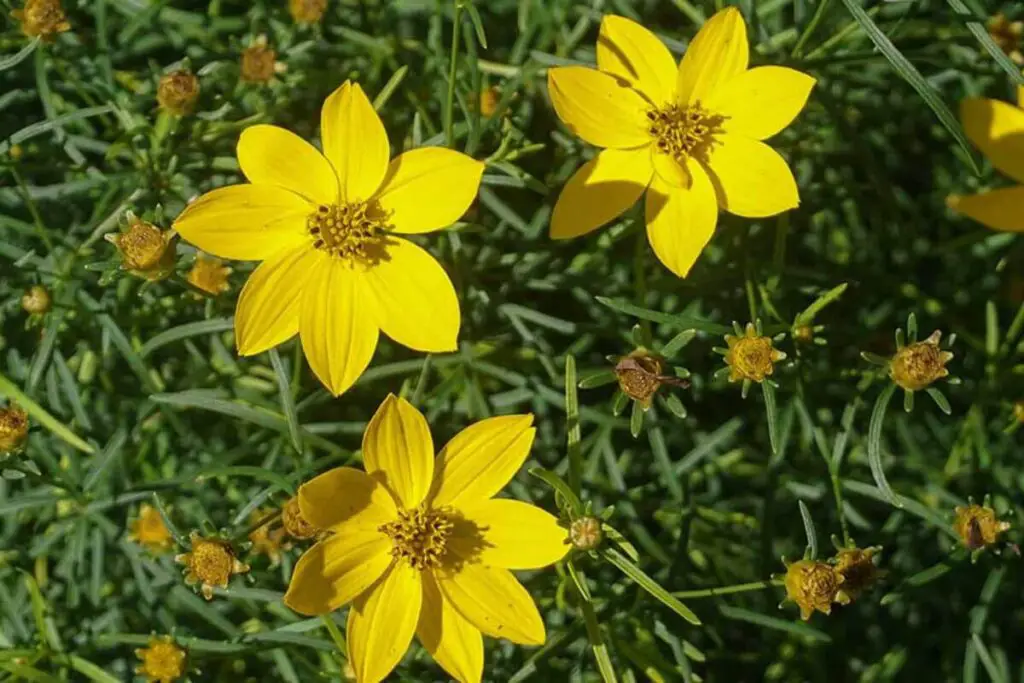Introduction
In the vibrant world of gardening and landscaping, the choice of plants can make or break the aesthetics of your outdoor space. Two popular contenders in the world of flowering perennials are Coreopsis Zagreb and Coreopsis Moonbeam. These delightful flowers add a burst of color to your garden, but which one is the right choice for your specific needs? In this article, we’ll compare Coreopsis Zagreb and Moonbeam in terms of appearance, care requirements, and overall garden appeal.
Coreopsis Zagreb: The Sunshine Yellow Marvel
Appearance
Coreopsis Zagreb, also known as Zagreb Tickseed, is celebrated for its vibrant yellow petals that resemble rays of sunshine. This perennial boasts delicate, fern-like foliage that contrasts beautifully with its cheerful blooms. With a compact growth habit, Coreopsis Zagreb reaches a height of about 18 to 24 inches, making it an excellent choice for both borders and containers.
Care Requirements
One of the standout features of Coreopsis Zagreb is its low-maintenance nature. It thrives in full sun but can tolerate partial shade. This hardy plant is drought-tolerant once established, making it a perfect choice for gardeners with busy schedules. To keep it looking its best, deadhead spent flowers regularly and divide the plant every few years to maintain its vigor.

Coreopsis Moonbeam: The Ethereal Pale Yellow Beauty
Appearance
Coreopsis Moonbeam, also referred to as Moonbeam Tickseed, offers a softer, pastel-yellow hue compared to Zagreb. Its delicate, daisy-like flowers are a subtle addition to any garden. Moonbeam grows slightly taller, reaching heights of 18 to 30 inches, and its feathery foliage adds an airy quality to your landscape.
Care Requirements
Like its counterpart, Coreopsis Moonbeam prefers full sun but can tolerate some shade. This perennial is also drought-tolerant and requires minimal maintenance. Deadheading is recommended to encourage continuous blooming. Coreopsis Moonbeam’s graceful appearance pairs well with a variety of garden companions.
Choosing Between Coreopsis Zagreb and Moonbeam
Now that we’ve explored the distinctive features of both Coreopsis Zagreb and Moonbeam, how do you decide which one to plant in your garden? Here are some factors to consider:
1. Color Preference
If you’re a fan of bold, sunshine-yellow blossoms that demand attention, Coreopsis Zagreb is the clear winner. However, if you prefer a more subtle, pastel-yellow palette, Moonbeam might be your ideal choice.
2. Garden Design
Consider your overall garden design. If you’re aiming for a vibrant, high-energy garden, Coreopsis Zagreb’s bright blooms will be a striking addition. On the other hand, if you’re going for a dreamy, cottage-style garden, Coreopsis Moonbeam’s delicate appearance fits the bill.
3. Space and Height
The height of your plants matters. Coreopsis Zagreb is more compact, making it suitable for smaller spaces and containers. If you have ample room and want to create varying levels of height in your garden, Coreopsis Moonbeam’s taller growth might be preferable.
4. Maintenance
Both varieties are low-maintenance, but if you’re truly looking for a set-and-forget plant, either one will work. Regular deadheading will ensure continuous blooming for both Coreopsis Zagreb and Moonbeam.
Conclusion
In the showdown between Coreopsis Zagreb and Moonbeam, there’s no clear winner; it all depends on your personal preferences and garden design. Both of these coreopsis varieties bring unique charm and elegance to your outdoor space, making your garden a blooming paradise.
And now, some frequently asked questions:
FAQs
1. Can I grow Coreopsis Zagreb and Moonbeam together in the same garden?
Absolutely! Planting both varieties in your garden can create a stunning contrast in color and height.
2. Do Coreopsis plants attract pollinators?
Yes, Coreopsis flowers are attractive to pollinators like bees and butterflies, making them a beneficial addition to your garden ecosystem.
3. How often should I water Coreopsis Zagreb and Moonbeam?
Watering frequency will depend on your local climate and soil conditions, but generally, these plants are drought-tolerant once established and don’t require excessive watering.
4. Can I use Coreopsis flowers for cut arrangements?
Yes, Coreopsis flowers make excellent cut flowers and can brighten up your indoor floral arrangements.
5. When is the best time to divide Coreopsis plants?
The best time to divide Coreopsis plants is in early spring or late summer to early fall when they are not in active bloom.



